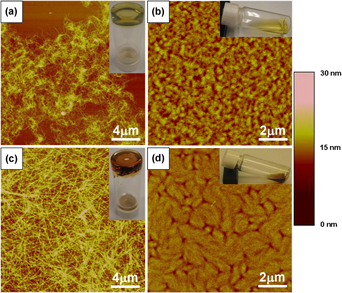Article contents
Solvent-vapor annealing-induced growth, alignment, and patterning of π-conjugated supramolecular nanowires
Published online by Cambridge University Press: 25 January 2011
Abstract

The self-assembling properties of two rationally designed discotic π-conjugated hexaazatrinaphthylene (HATNA) molecules have been studied. In appropriate solvent systems, both ester-dodecyl-substituted and amide-dodecyl-substituted HATNAs self-assembled into nanowires and formed organogels. These nanowires could be easily transferred onto solid supports through spin casting for morphological study. In addition to the solution-based self-assembly method, solvent-vapor annealing (SVA) was explored as an alternative way to control the organization of supramolecular nanowires on surfaces. It was found that amorphous thin film of HATNA molecules transformed gradually into nanowire structures through a nucleation and growth mechanism during the SVA process. Several parameters including the preordering of molecules in the original thin film, choice of solvent vapors, annealing times, and surface properties were tuned to create different supramolecular organizations. Under particular conditions, aligned nanowires with preferential direction can be achieved.
Keywords
- Type
- Reviews
- Information
- Journal of Materials Research , Volume 26 , Issue 2: Focus Issue: Self-Assembly and Directed Assembly of Advanced Materials , 28 January 2011 , pp. 311 - 321
- Copyright
- Copyright © Materials Research Society 2011
References
REFERENCES
- 10
- Cited by


